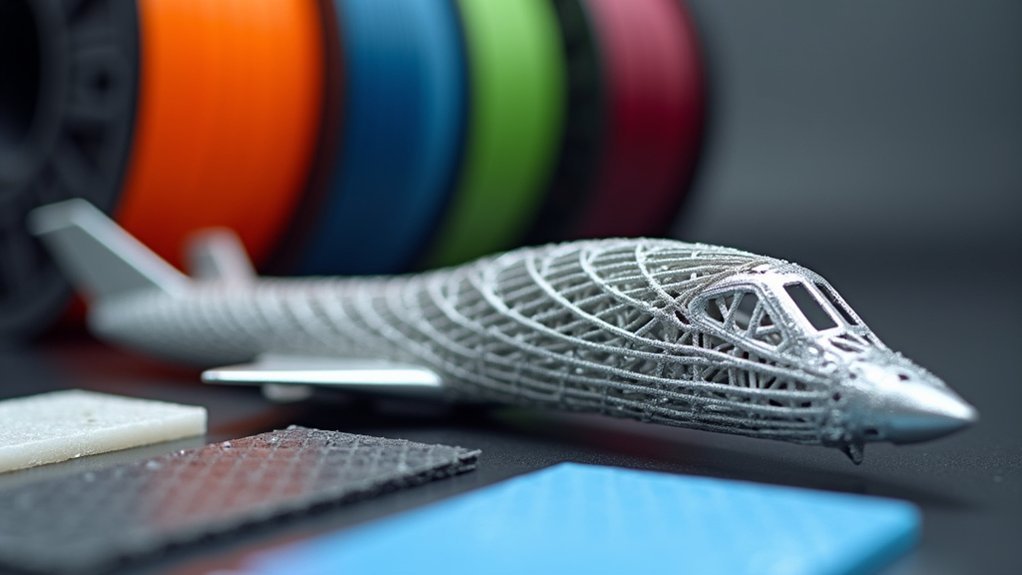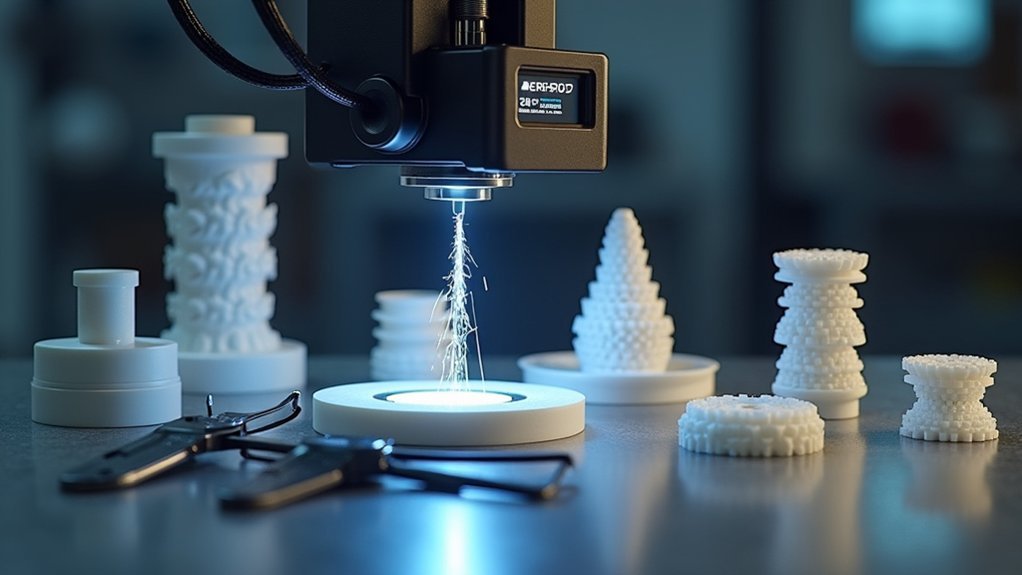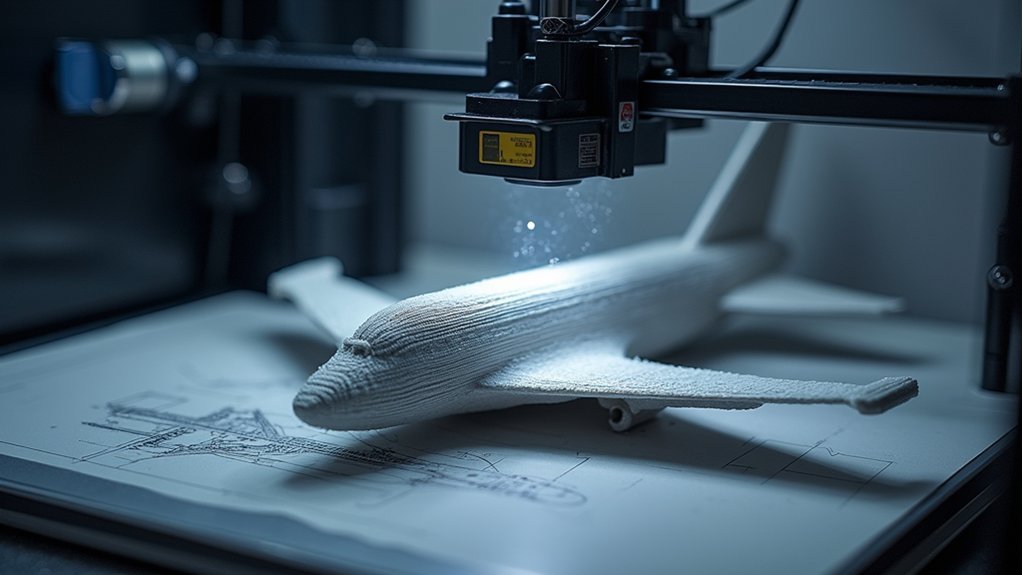You’ll achieve aerospace-grade 3D printed components by focusing on three essential areas. First, select materials like titanium alloys or PEEK polymers that match your specific performance requirements and environmental conditions. Second, implement thorough post-processing techniques including CNC machining and rigorous dimensional inspections to meet AS9100 standards. Third, maintain precise geometric tolerances within ±0.1mm through regular calibration and real-time monitoring systems. Master these fundamentals to discover advanced strategies for consistent, reliable aerospace manufacturing.
Prioritize Material Selection Based on Performance Requirements

When you’re developing aerospace components through 3D printing, material selection forms the foundation of your entire manufacturing strategy.
You’ll need to match materials to specific performance requirements, considering factors like strength-to-weight ratios and environmental conditions. Titanium alloys excel for structural components requiring lightweight durability, while high-performance polymers like PEEK offer thermal stability for specialized aerospace applications.
Metal alloys such as Inconel provide superior mechanical properties for high-temperature, high-pressure environments.
You must align your material choice with the appropriate manufacturing technique—metals work best with DMLS, while polymers suit FDM processes.
Don’t overlook compliance requirements; validate your selections through rigorous certification processes to meet aerospace standards like AS9100, ensuring safety and reliability in your final components.
Implement Rigorous Post-Processing and Quality Control Measures
After selecting ideal materials for your aerospace components, you’ll need to transform those raw 3D printed parts into precision-engineered products that meet exacting industry standards.
Implement thorough post-processing techniques including CNC machining, grinding, and polishing to achieve superior surface finish quality.
Your quality control protocols must include rigorous dimensional inspections and mechanical testing to verify compliance with aerospace specifications.
Focus on achieving precise tolerances, particularly press fit tolerances within 0.00-0.05mm for secure assemblies.
Surface roughness measurements are critical for ensuring component performance and durability.
Continuously monitor your production processes and post-processing outcomes to maintain consistency and reliability across all manufactured parts, as aerospace applications demand unwavering precision and safety standards.
Maintain Precise Geometric Tolerances Throughout the Printing Process

Since aerospace components demand tolerances within ±0.1 mm for critical applications like engine parts, you must establish stringent geometric control protocols from the moment your printer begins layering material.
High-resolution 3D printing technologies like Selective Laser Melting can achieve precise geometric tolerances as tight as ±0.02 mm when properly configured. Design for manufacturability principles optimize part geometry to minimize tolerance issues before production begins.
Properly configured Selective Laser Melting achieves ±0.02 mm tolerances while design for manufacturability principles prevent geometric issues before production.
- Implement regular calibration and maintenance schedules to guarantee consistent print quality across production runs
- Conduct unit tests on critical features during prototyping to identify tolerance problems early in development
- Utilize advanced monitoring systems that track dimensional accuracy in real-time throughout the printing process
These proactive measures guarantee your aerospace components consistently meet aerospace standards.
Frequently Asked Questions
How Is 3D Printing Used in the Aerospace Industry?
You’ll find 3D printing creates lightweight components, prototypes, and fixtures in aerospace. It reduces costs by 60-90%, simplifies complex parts like fuel nozzles, and produces custom brackets that withstand extreme temperatures.
What Is the 45 Degree Rule for 3D Printing?
You should keep overhangs at 45 degrees or less from horizontal when 3D printing. This prevents sagging without supports, improving quality while reducing material waste and post-processing time.
Can Aircraft Parts Be 3D Printed?
You can absolutely 3D print aircraft parts. Major companies like Boeing and Airbus already use additive manufacturing for components including brackets and turbine blades, creating lighter, stronger parts than traditional methods.
What Is the Most Profitable Thing to 3D Print?
You’ll find lightweight aerospace components like brackets and turbine blades most profitable to 3D print. They’re highly valued because they reduce aircraft weight, improve fuel efficiency, and command premium prices from manufacturers.





Leave a Reply